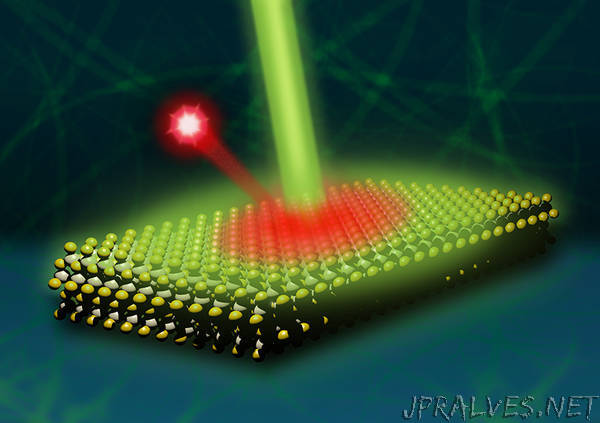
“Control over light-emitting properties of tiny semiconductor platelets may yield new opportunities for innovative optics utilizing quantum phenomena.
The Science
Ultrapowerful computers and sensors need entangled packets of light. Entangled means the packets, or photons, can be in one of two states but are not meaningfully assigned to either state. Scientists found a way to create entangled photons with biexcitons. A biexciton is two pairs of bound electrons and holes. The team showed that ultrathin, extremely small semiconductor plates can support a biexciton. Further, above a certain lateral size for the nanoplatelet, absorbing a photon can produce a biexciton nearly 100 percent of the time. This work was done by researchers at the Center for Nanoscale Materials which is an Office of Science user facility, and the University of Chicago.
The Impact
Biexcitons are of strong interest for studying light’s interaction with matter. Why? Biexcitons can potentially emit two “entangled” photons. Entanglement forms the basis in physics for potential ultra-powerful computers and sensors. This study shows how to efficiently create biexcitons in a single tiny platelet. The method offers guidance for simplified, and miniaturized, approaches to creating entangled states.
Summary
Advances in synthetic chemistry now enable the creation of nanoparticles with many different shapes, sizes, and compositions. One recent advance allows for the synthesis of semiconducting nanoplatelets with exquisite control over thickness (just a few nanometers thick) while the lateral dimensions can be varied in the hundreds of nanometer range. These materials produce optical resonances in the visible spectral range that produce excitons when a single photon of light is absorbed. Scientists in the Center for Nanoscale Materials have taken this a step further by discovering the nanoplatelets display an unusual size-dependent property wherein two pairs of electrons and holes (biexcitons) are created with nearly 100 percent quantum yield. This discovery was made through careful studies of the single photon emission that occurs when the electron and hole recombine as a function of nanoplatelet size. Importantly, not all nanoplatelets showed high biexciton quantum yield—only those with a high probability to first create a single exciton showed the effect. This indicates a likely dependence of emission on defects in the nanoplatelets, where tiny platelets with a small number of defects show the highest quantum yield of emission. This work has potential to be of importance in quantum optics because biexcitons in a single platelet can in principle produce two “entangled” photons during emission. Entanglement is a principle of quantum mechanics where the properties of individual states cannot be described without considering the entire system—such “correlations” are the basis for enhanced quantum computing opportunities. The Center for Nanoscale Materials’ approach with nanoplatelets is a simple means to create entangled photon pairs. In turn, this means potentially offers a way to create miniaturized connections in quantum optical networks.”
